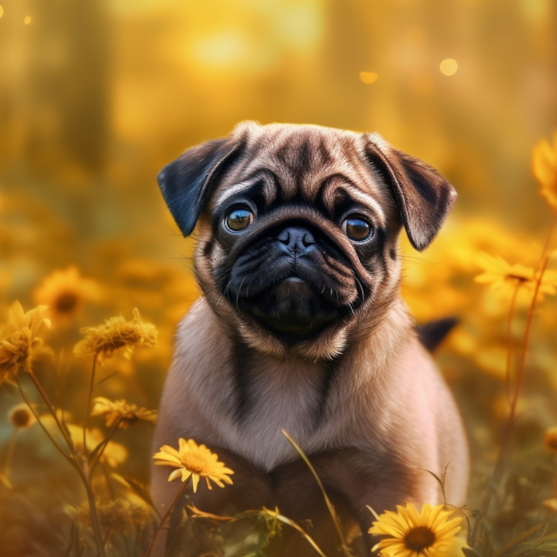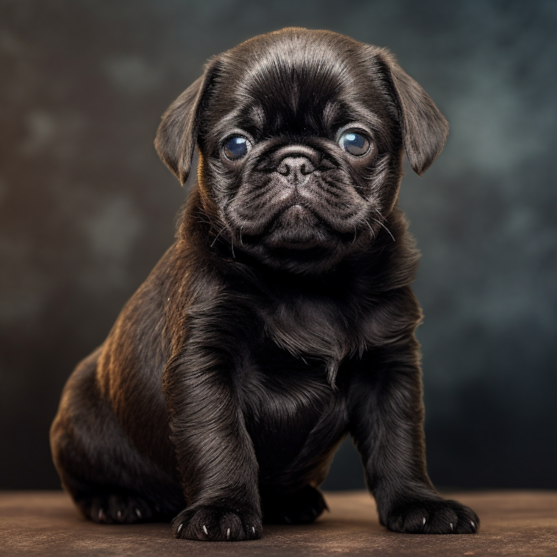Pug Breed Information


Pugs are a delightful breed that bring joy and companionship to their owners. With their adorable looks, kind hearts, and charming personalities, it's no wonder they have become such a beloved breed all over the world.
One of the most distinctive features of Pugs is their wrinkly, flat faces, which give them a unique look that is instantly recognizable. Their short, sleek coats can come in a variety of colors, including fawn, black, and silver. Pugs are typically small in size, weighing between 14 and 25 pounds, and standing only about 10 to 11 inches tall at the shoulder.
Despite their small size, Pugs are known for their big personalities. They are affectionate and loyal companions, always eager to please their owners and make them laugh with their silly antics. Pugs have a playful and curious nature, making them great family pets and companions for children.
While Pugs are generally easy-going and low energy, they still require daily exercise and mental stimulation to stay happy and healthy. They also have a tendency to gain weight, so it's important to monitor their diet and make sure they are getting enough exercise.
Characteristics
- Pugs are a small breed, typically weighing between 14 and 25 pounds and standing between 10 and 11 inches tall at the shoulder
- The average lifespan of a Pug is between 12 and 15 years, though, with proper care and nutrition, they can live well into their teens
- Pugs are considered a healthy breed with few major health concerns. However, they are prone to certain issues such as obesity, skin fold dermatitis, and breathing difficulties due to their short snouts
- These charming pups are known for their affectionate and playful nature. They are loyal and devoted to their owners, making them great family pets
- While Pugs enjoy short walks and playtime, they are not an overly active breed and do well in apartments or homes with small yards
- These courageous pups are intelligent and eager to please, making them relatively easy to train with positive reinforcement techniques
- Pugs are adaptable to various lifestyles and environments, making them a popular breed for city and suburban dwellers alike
- With their sharp hearing and excellent sense of smell, Pugs can provide an alert and reliable form of security for any home

Appearance
The Pug breed is instantly recognizable for its distinctive and charming appearance. These compact dogs typically weigh between 14 and 18 pounds and stand around 10 to 11 inches tall at the shoulder. Their compact build, short legs, and square-shaped body make them unmistakable.
The Pugs coat is short, glossy, and smooth, and comes in a variety of colors, including fawn, black, and silver. Their wrinkly face and large, expressive eyes give them a unique and endearing look, while their curly tail adds to their overall charm.
These pups have a sturdy and muscular build, broad chests, and strong legs supporting their stocky frame. Despite their small size, they are surprisingly heavy for their weight and have a solid, compact appearance, they weigh around 14-25 pounds.
The Pug's appearance is one of the key factors that make them so beloved by owners and enthusiasts alike. Their friendly, outgoing personalities match their distinctive and adorable looks, making them a perfect choice for anyone looking for a loyal and lovable companion.
Temperament
Pugs have a charming and loving temperament that endears them to families and individuals alike. They are friendly and outgoing and love being around people, making them wonderful companion pets. Pugs are known for their calm and stable nature, making them an excellent choice for families with children.
These dogs are social creatures and enjoy spending time with their owners, cuddling, and relaxing on the couch or going for walks in the park. They are also known for being quite playful and entertaining, often making their owners laugh with their silly antics. Pugs love attention and affection and are great at giving it in return.
Their sweet and loving nature makes them a fantastic choice for families, couples, or singles looking for a loyal and affectionate companion. They thrive on attention and are very loyal to their owners, making them a great choice for those seeking a loving and devoted pet. Their gentle temperament also makes them great therapy dogs for those in need of emotional support.
Care
Grooming
Pugs have a short, smooth coat that is relatively low maintenance compared to other breeds. However, they still require regular grooming to keep them looking and feeling their best. Pugs shed year-round, so regular brushing with a soft-bristled brush can help control shedding and distribute the natural oils in their coat. It is also important to clean their facial wrinkles regularly to prevent infections and odors from developing.
Pugs' nails should be trimmed regularly to prevent them from growing too long and causing discomfort. Their teeth should also be brushed regularly to prevent dental problems, which are common in this breed.
Regular baths can help keep your Pug smelling fresh and clean. Be sure to use a dog-specific shampoo and avoid getting water in their ears to prevent infections. Overall, the grooming requirements for Pugs are moderate and can easily be incorporated into a regular routine.
Exercise Needs
Pugs are not known for their athletic abilities, but they still require regular exercise to maintain their health and well-being. As a brachycephalic breed, they can easily become overheated and have difficulty breathing, so it's important to provide them with gentle exercise that won't strain their respiratory system.
A daily walk around the neighborhood or a romp in the backyard is usually enough to satisfy a Pugs exercise needs. They also enjoy interactive playtime with their owners, such as playing with toys or learning new tricks. Swimming is another activity that can benefit Pugs, as it's a low-impact exercise that doesn't strain their joints.
It's important to monitor a Pugs activity level and make sure they don't overexert themselves, especially in hot or humid weather. They are also prone to obesity, so it's important to maintain a healthy diet and limit treats to prevent weight gain. A Pug can lead a happy and healthy life with proper exercise and nutrition.
Health
Pugs are generally a healthy breed, however, like all breeds, they are prone to certain health issues that potential owners should be aware of. One of the most common health issues in Pugs is their susceptibility to obesity, so it's important to ensure they get enough exercise and are fed a well-balanced diet to maintain a healthy weight.
Other health concerns that Pugs may be prone to include breathing problems, such as Brachycephalic Airway Syndrome, due to their short snouts. This can make breathing difficult, especially in hot or humid weather. Eye problems such as dry eye can also occur, and regular eye exams with a veterinarian are recommended.
Pugs may also be prone to skin problems and allergies, which can lead to itching and scratching. Regular grooming, such as brushing their coat and cleaning their ears, can help prevent skin issues. Additionally, it's important to keep up with dental care to prevent tooth decay and gum disease.
Lifespan
Pugs are known for being a relatively healthy breed with a lifespan of around 12 to 15 years. However, as with any breed, there are some health issues that may affect Pugs. One of the most common health concerns is their tendency to gain weight, which can lead to obesity and related health problems.
It's important to monitor their diet and provide regular exercise to keep them at a healthy weight. With proper care and attention to their health needs, Pugs can live long and happy lives with their owners.
Training
Pugs are intelligent and eager to please, which makes them relatively easy to train. Positive reinforcement training techniques, such as rewards and praise, work well with this breed. Pugs respond well to consistent training and enjoy learning new tricks and commands. However, it's important to keep training sessions short and engaging, as Pugs can have a short attention span.
Socialization is also important for Pugs, as they can be prone to separation anxiety and overprotective behavior. Introducing them to new people, animals, and environments from a young age can help prevent these issues. It's also important to establish yourself as the pack leader, as Pugs can be stubborn and may try to assert themselves if they don't see you as the authority figure.
Pugs are not particularly athletic dogs, but they still require daily exercise to keep them healthy and happy. Short walks and playtime in a secure, fenced yard are good options for providing exercise for Pugs. However, monitoring their activity levels is important, as they are prone to overheating and respiratory issues due to their short snouts.
History
The Pug is a small breed that originated in China more than 2,000 years ago. It is believed that they were bred to be the companions of Chinese emperors, and they were highly valued for their loyalty and charming personalities. The breed eventually made its way to Europe in the 16th century when Dutch traders brought them over from Asia.
The Pug quickly became popular in Europe, especially in the Netherlands, where they were often featured in paintings and other works of art. The breed was later brought to England, where it became a favorite of Queen Victoria. It is said that the queen owned as many as 38 Pugs during her reign.
During the early 20th century, Pugs became popular in the United States, and the American Kennel Club recognized the breed in 1885. Since then, the breed has remained a beloved companion for families all over the world. Pugs have also been used as mascots for various organizations and brands. Today, the Pug remains a popular breed known for its charming personality, loving nature, and distinct appearance.
